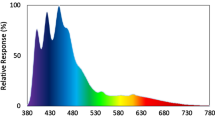Abstract
Thalassicolla nucleata is a skeletonless, large spumellarian radiolarian (ca 3 mm diameter) occurring abundantly in the surface water of the Sargasso Sea. It has a complex cellular organization consisting of (1) a well-defined central capsule surrounded by a non-living capsular wall perforated by numerous cytoplasmic strands and (2) an extracapsulum containing a frothy layer of alveolate cytoplasm penetrated by numerous rhizopodia. Evidence is presented for physiological specialization complementing this structural compartmentalization. Acid acryl phosphatase activity (a digestive vacuole marker enzyme) is approximately 3 times greater in the extracapsulum compared to the intracapsulum; whereas, cytochrome oxidase (a respiratory marker enzyme) is approximately 1.5 times greater in the intracàpsulum compared to the extracapsulum. Furthermore, cytochemical and electron microscopic evidence indicates that the extracapsulum, containing large vacuoles and copious amounts of acid phosphatase reaction product, is a major site of catabolism; while the intracapsulum, containing the nucleus, numerous Golgi bodies, and a rich supply of mitochondria, is a substantial site of anabolism, lysosomal secretory activity, and food product storage. This marked level of cellular specialization in T. nucleata may enhance its biological efficiency and thus partially account for its abundance in oligotrophic environments.
Similar content being viewed by others
Literature Cited
Anderson, O. R.: The ultrastructure and cytochemistry of resting cell formation in Amphora coffaeaformis (Ag.) Kütz. J. Phycol. 11, 272–281 (1975)
Anderson, O. R.: Ultrastructure of a colonial radiolarian Collozoum inerme (Muller) and a cytochemical determination of the role of its zooxanthellae. Tissue and Cell 8, 195–208 (1976a)
Anderson, O. R.: A cytological fine structure study of two spumellarian radiolaria and their symbionts. Mar. Micropaleontology 1, 81–99 (1976b)
Anderson, O. R.: Fine structure of a collodarian radiolarian (Sphaerozoum punctatum Müller 1858) and cytoplasmic changes during reproduction. Mar. Micropaleontology 1, 287–298 (1976c)
Anderson, O. R.: Photosynthesis and respiration during resting cell formation in Amphora coffaeaformis (Ag.) Kütz. Limnol. Oceanogr. 21, 452–456 (1976d)
Anderson, O. R.: Fine structure of nassellarian radiolaria. Mar. Micropaleontology 2, 251–264 (1977)
Anderson, O. R.: Light and electron microscopic observations of feeding behavior, nutrition, and reproduction in laboratory cultures of Thalassicolla nucleata Huxley. Tissue and Cell 10, 401–412 (1978a)
Anderson, O. R.: Fine structure of a symbiont-bearing colonial radiolarian Collosphaera globularis and 14C-isotopic evidence for assimilation of organic substances from its zooxanthellae. J. Ultrastructure Res. 62, 181–189 (1978b)
Anderson, O. R.: Radiolaria. In: Biochemistry and physiology of protozoa, Vol. 3, pp 1–42. Ed. by M. Levandowsky and S. Hutner, New York: Academic Press 1980
Anderson, O. R.: Radiolarian fine structure and silica deposition. In: Silicon and siliceous structures in biological systems, pp 347–379. Ed. by T. Simpson and B. Volcani. Heidelberg: Springer Verlag 1981
Cachon, J. and M. Cachon: Le système axopodial des Radiolaria Nassellaires. Arch. Prostitenk. 113, 80–97 (1971a)
Cachon, J. and M. Cachon: Recherches sur le métabolisme de la silice chez les Radiolariaires. Absorption et excretion. C. R. Acad. Sci. Paris 272, 1652–1654 (1971b)
Cachon, J. and M. Cachon: Le système axopodial des Radiolaires Sphaeroidés I. Centroaxoplastidies. Arch. Protistenk, 114, 51–64 (1972a)
Cachon, J. and M. Cachon: Le système axopodial des Radiolaires Sphaeroidés II. Les périaxoplastidies III. Les cryptoaxoplastidiés (anaxoplastidiés) IV. Les fusules et le système rheoplasmique. Arch. Protistenk. 114, 291–307 (1972b)
Cachon, J. and M. Cachon. Intracellular transfer of membranes and its relation to the microtubular axopodial system. Biol. Cellulaire 30, 137–140 (1977)
Cachon, J., M. Cachon, L. G. Tilney and M. S. Tilney: Movement generated by interactions between the dense material at the ends of microtubules and non-actin-containing microfilaments in Sticholonche zanclea. J. Cell Biol. 72, 314–338 (1977)
Cooperstein, S. J. and A. Lazarow. A microspectrophotometric method for the determination of cytochrome oxidase. J. Biol. Chem. 189, 665–670 (1951)
Dorsey, T. E., P. McDonald and O. Roels: A heated buiret-Folin protein assay which gives equal absorbance with different proteins. Anal. Biochem. 78, 156–164 (1977)
Goll, R. and G. Merinfeld: Radiolaria. In: The encyclopedia of paleontology, encyclopedia of earth sciences V. III. pp 673–684. Ed. by R. W. Fairbridge and D. Jablonsky, Stroudsburg, Pennsylvania: Hutchinson and Ross 1979
Gomori, G.: Microscopic histochemistry: principles and practice, p 189. Chicago: University of Chicago Press 1952
Haeckel, E.: Report on the radiolaria collected by H.M.S. Challenger during the years 1873–1876. In: Report of the voyage of the Challenger. Ed. by C. W. Thomson and J. Murray. Zoology 18, 1–1803 (1887)
Herring, P. J.: Some features of the bioluminescence of the radiolarian Thalassicolla sp. Mar. Biol. 53, 213–216 (1979)
Nigrini, C. and T. C. Moore: A guide to modern radiolaria, 342 pp. Special publication No. 16, Cushman Foundation for Foraminiferal Research 1979
Swanberg, N. R. and G. R. Harbison: The ecology of Collozoum longiforme, sp.nov. a new colonial radiolarian from the equatorial Atlantic Ocean. Deep-Sea Res. 27, 715–731 (1979)
Swanberg, N. R. and O. R. Anderson: Colozoum caudatum sp. nov.: a giant colonial radiolarian from equatorial and Gulf Stream waters. Deep-Sea Res. 28, 1033–1048 (1980)
Author information
Authors and Affiliations
Additional information
Communicated by S. K. Pierce, College Park
Rights and permissions
About this article
Cite this article
Anderson, O.R., Botfield, M. Biochemical and fine structure evidence for cellular specialization in a large spumellarian radiolarian Thalassicolla nucleata . Marine Biology 72, 235–241 (1983). https://doi.org/10.1007/BF00396828
Accepted:
Issue Date:
DOI: https://doi.org/10.1007/BF00396828




